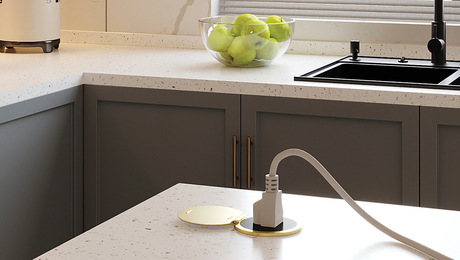In New York, in my county we are in the process of converting over to the new national building codes as of January 1, I can’t remember the arconym.
Anyway, all new construction homes must have low E glazed, argon windows.
Sounds good but I got to thinking the other day, how the hell would I know if there is really Argon gas in these new windows?
Does anyone have any knowledge of argon ever being tested windows over time say in 5 years to see if the stuff is still there.
Does this stuff leak out over time?
Please enlighten me



















Replies
If you put your hand on an argon fill window in the winter it will feel warmer than one that is not . It can leak if the seal releases its bond .
cornfucious say, "If Argon seal lose gas, it argh gone"
Hargh, har, har!.
Excellence is its own reward!
"The first rule is to keep an untroubled spirit.
The second is to look things in the face and know them for what they are."
--Marcus Aurelius
roflol, ........Con-fucious say, let me catch my breath, etc
Only thing the Ar fill benefits after ten years are lawyers, politicians, and con artists.
PS: if I could redo anything I've done on my own house(after 30 years experience in it), I'd never have used 'insulated glass' aka f******fogging leakers", I'd of stayed with single pane and storm windows!
The reading I have done (sorry, I can't quote the source off the top of my head) indicates that you can expect the argon to be gone in about five to ten years. It has something to do with the seal around the area between the two panes eventually allowing the gas to escape due to the varying rates of expansion/contraction of all the different materials in the window.
The low E glass sounds like a great idea, but I have a hard time finding literature that explains how it works. Is it just polarized so that sun can enter when it is low in the sky (i.e. winter, heating season), or does it have something to do with shortwave vs. longwave radiation? Anyone know?
-Rich
rfarn... good point... argon and low-e are not the same animal...Mike Smith Rhode Island : Design / Build / Repair / Restore
Low E coatings are, well, coatings, that are laid on the glass in a vacuum chamber in a process similar to electrostatic painting. Several of the big window manufacturers have the process on their web sites to edify us about how it's done, and what the coatings are ... don't remember which sites right now.
The reason for the argon is that it is a relatively heavy gas (mass 44 vs mass 29 for air) and has a much lower thermal coductivity than air which means that for a given volume of space it will transmit less heat than air. The problem is of course keeping it between two panes of glass. It would be next to impossible (and so, very expensive) to keep it sealed in for the life of the window so I believe the thinking is as follows: The manufacturer must try to eliminate moisture between the two panes to avoid condensation within the window so why not fill it with an optimal gas that will yield the highest thermal value for the longest time. Argon is not expensive and so does not add a significant amount to the total cost. That's the rational, you decide if it is worth the extra cost. (I think that the extra cost is just trumped up. Argon is not significantly nore expensive than Nitrogen.)
David Thomas posted a good synopsis of the chemistry and physics of thermal windows last year. The thermal conductivity is relatively negligible compared to the surface boundary layer, which the heavier gas effects also.
IMHO, the insulated glass fiasco is the biggest consumer ripoff in the housing market of the 20th century - replacement needed every 20-30 years due to internal fogging except for a very few actually hemeticaly sealed units (fused glass edges) . The industry has hornswagled the bureaucracts into legislating the boondogle. If the regulatory weenies want to regulate, regualte well sealed storm windows which perform better thermally and are more cost effective.
e-glass can be applied also to single panes, but cleaneing could remove it, so granted, there is another issue ther for hihg solar insolation AC climates.
BTW, has anyone EVER discovered the exact chemical/biological/physical mechanism for the ETCHING of the inside of insulated glass panes??
So someone remembers some of the things I post? Cool.
One reason argon works better than, for instance, helium is not that it is heavier (although it is), it is because it is bigger. At atmospheric pressure, you have a constant number of gas molecules per cubic inch (440,000,000,000,000,000,000 give or take a few) regardless of what kind of gas - air, nitrogen, argon, helium, etc. Since argon is bigger, the average molecule doesn't travel as far (its "mean free path" is less). Since it doesn't travel as far before transfering some heat, it isn't as effective at moving heat from one pane to the other.
Another reason argon works better than air or nitrogen is that it is is a single atom, not a diatomic molecule. Diatomic moecules (and even more so, triatomic moecules like CO2) carry more heat because they can rotate in 2 (3 for CO2) axises.
In my own house the Stanley half-lite double pane doors (nitrogen?) do significantly worse than the argon-filled double paned windows. As evidenced by the condensation in milder conditions (15 to 0F) and more condensation in cold conditions (-10 to -40). And, of course the lose more BTU/hour than the better windows.
My argon filled windows are performing as well as originally after 4 years. I'll keep you posted.
David Thomas Overlooking Cook Inlet in Kenai, Alaska
I'm not up on the argon thing, David, but when I moved to Houston, TX., from the north of the UK, in 1993, I was taken aback that standard windows in new homes came with a single pane of glass 1/8" or so thick. These windows were south facing, and you could fry an egg in about 30 seconds flat on the inside during August.
Now, being from a cold country, I was used to the idea that windows commonly came as double glazed, and even triple glazed, or quadruple glazed units, particularly as you got into various parts of the Baltic nations, and areas in and about the Alps, and that these window units had been common building practice for about 50 years. It was my impression that double glazed (triple glazed, whatever) window units might play a significant role in keeping the cold out, and the warm in.
So, being both naive and stupid, I'd ask my new American friends that were building houses using 1/8" single pane 'picture' windows-- facing west and south why they didn't install double (triple, quadruple, etc.) glazed window units to keep it a bit cooler inside and save the AC from working like crazy? They would look at me as if I was completely nutso, and declare that it was uneconomical, and that it was much cheaper to turn the A/C thermostat down a bit.
I see that even here double glazing is starting to catch on just a hair, ha, ha. No point in pushing the boat out though. Saving money by reducing cooling bills is still not too high a proiority in these parts. Slainte.Some stuff I've made.
Kyeser
I've worked in houses that have older then 25 year old Andersons with no leaks within the glass. Worked in some with the cheepy windows that are all fogged up. You just need to continue to use a reputable window.
I've also installed those dopey Pella windows with the removeable interior glass. All the ones over radiators on alot of jobs get fogged up inbetween the glass in so many instances. I can't stand Pella.
By the way. You wouldnt happen to be from Long Island would you? Reason I ask is because my architect that I work with told me the same thing about the serious code changes here as of Jan 1. Thats why I got my plans submitted for the work I'm doing on my crib into the Huntington Building dept on Dec 30th....whewwwwww. Do you know what some of the code changes will be (not to get off the topic..sorry).
Be a gas (light a match)
Namaste'
Andy
"Attachment is the strongest block to realization"
http://CLIFFORDRENOVATIONS.COM